Progress is a slow and fickel beast, that often presents itself by accident. In a mad rush for the anything goes competition for the 2016 hackaday prize I stumbled on to a new method for making supercapacitors. In literature it is often described how to make monoliths and aerogels. The problem being is they researchers always grind them up and mix with a binder then paste on electrodes. This is not the way forward.
This project will describe how to make monolithic binder free supercapacitors using activated cotton fibers.
Because of how supercapacitors work, storing charges in the interface between electrode and electrolyte they can theoretically be made as massive as one desires as long as the carbon electrode is electrically conductive enough to avoid ohmic losses. I would not have even pondered this application if the dog hair and lint supercapacitor carbon monolith had not had such a low resistance.
I believe this construction method will be used in the future everywhere for grid scale storage of energy. It solves the main problems associated with aqueous supercapacitors being mAh by total weight of the device, self discharge rates, and cost of metals used in charge collectors.
This method can easily be scaled to make room sized supercapacitors for pennies on the dollar vs lead acid batteries and all other energy storage means. I believe it is the holy grail of low cost supercapacitors that can be constructed anywhere on earth.
This documentation describes Open Hardware and is licensed under the
CERN OHL v. 1.2.
You may redistribute and modify this documentation under the terms of the
CERN OHL v.1.2. (http://ohwr.org/cernohl). This documentation is distributed
WITHOUT ANY EXPRESS OR IMPLIED WARRANTY, INCLUDING OF
MERCHANTABILITY, SATISFACTORY QUALITY AND FITNESS FOR A
PARTICULAR PURPOSE. Please see the CERN OHL v.1.2 for applicable
conditions
 MECHANICUS
MECHANICUS
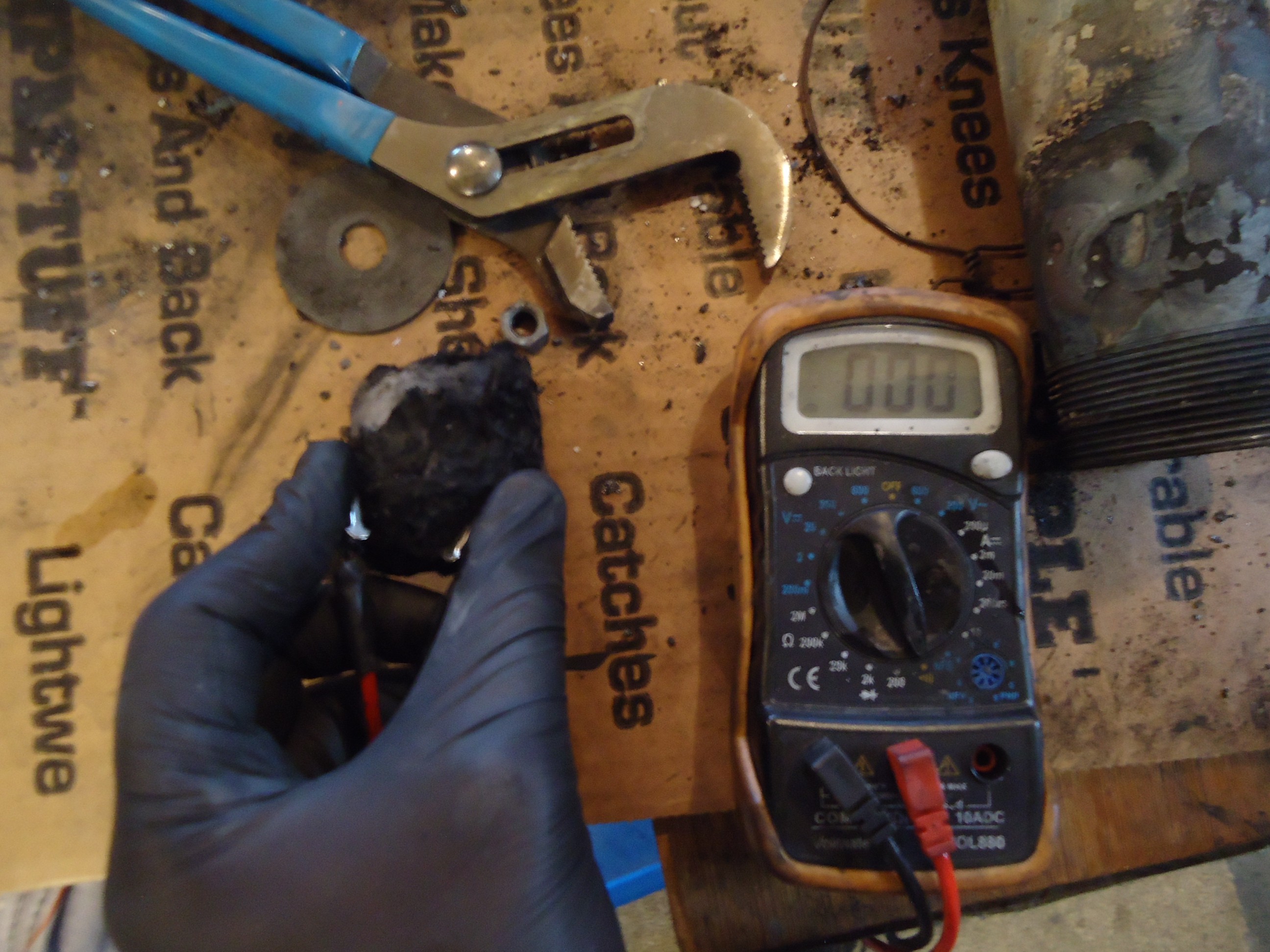

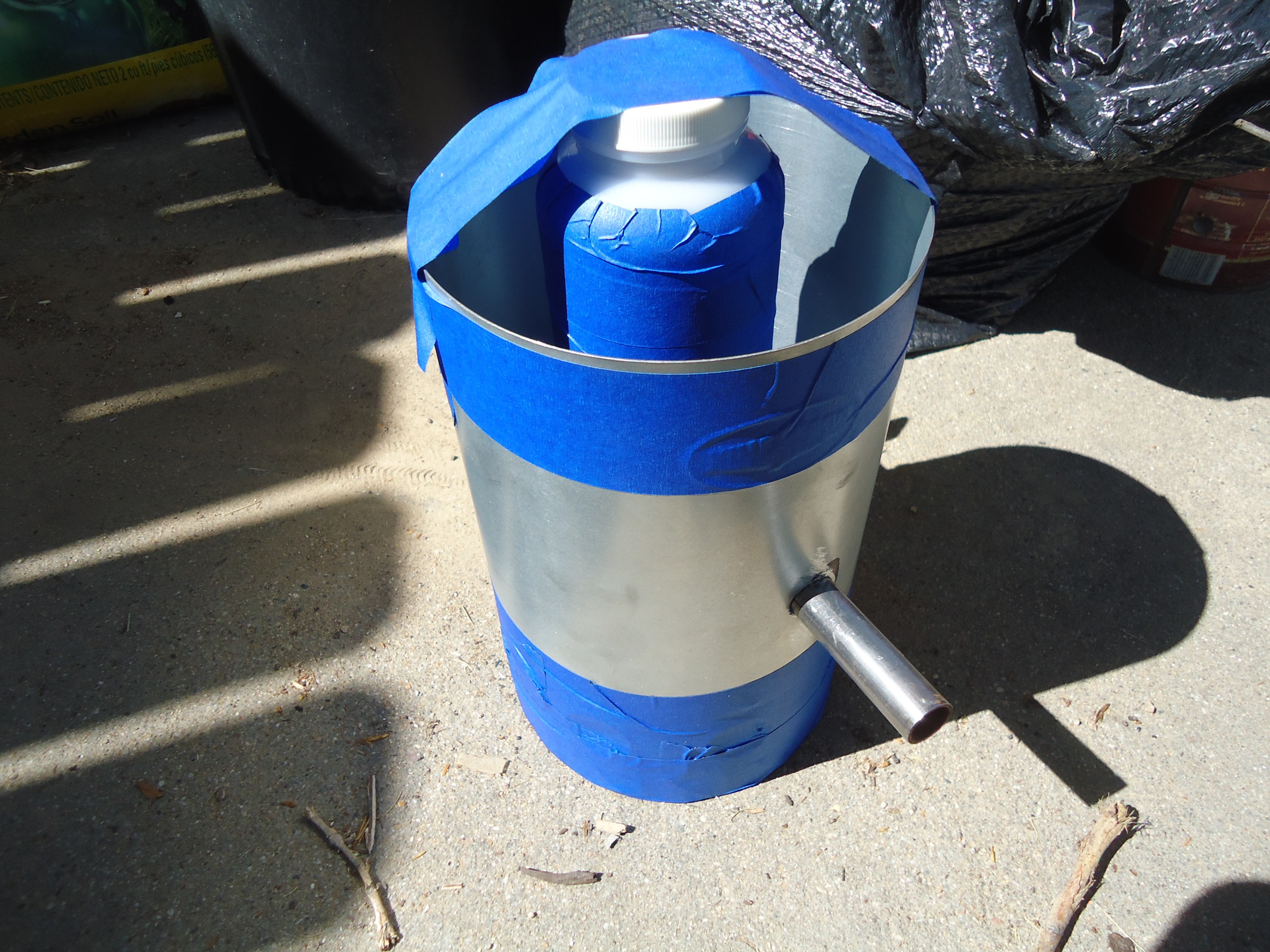
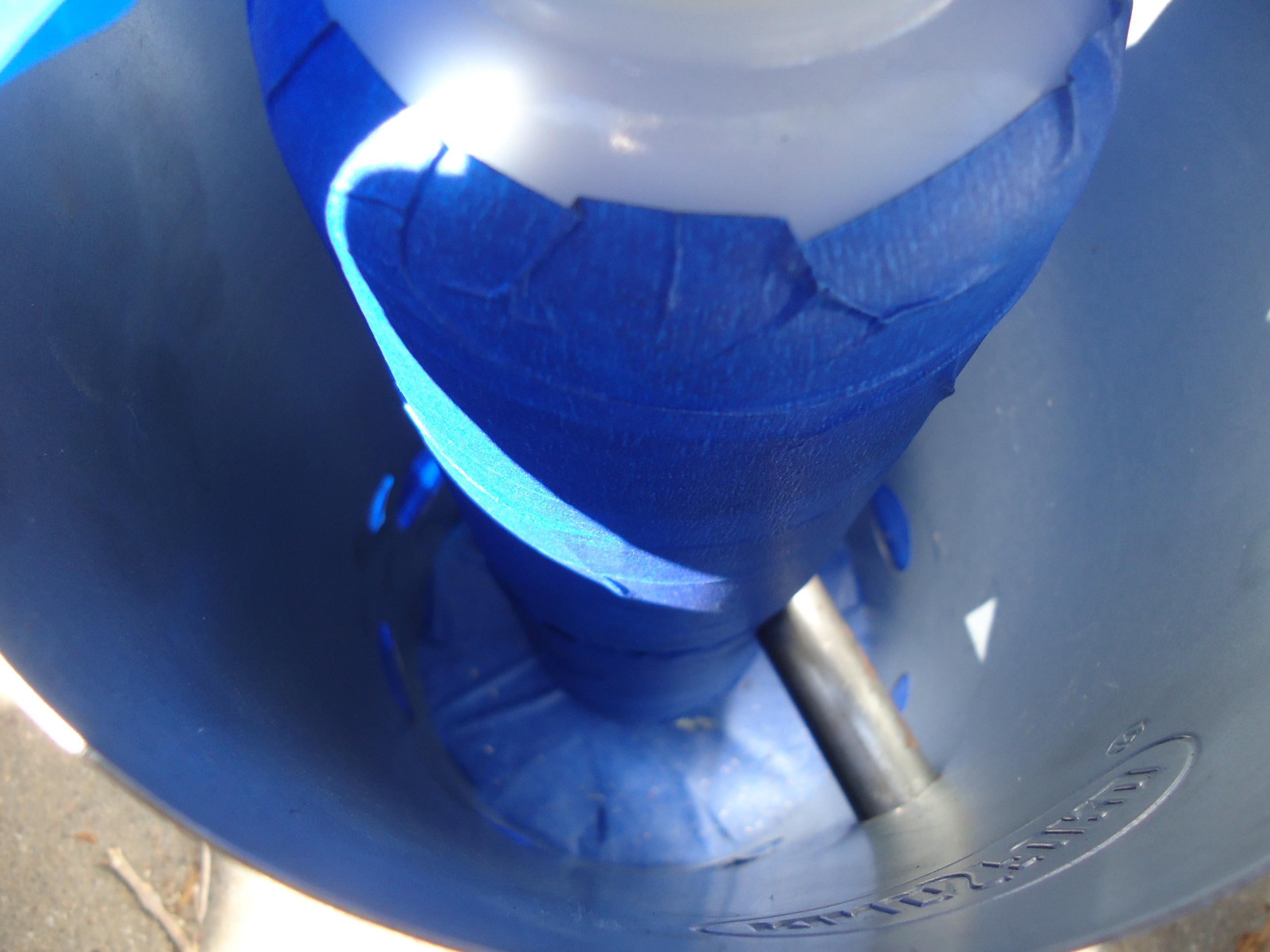

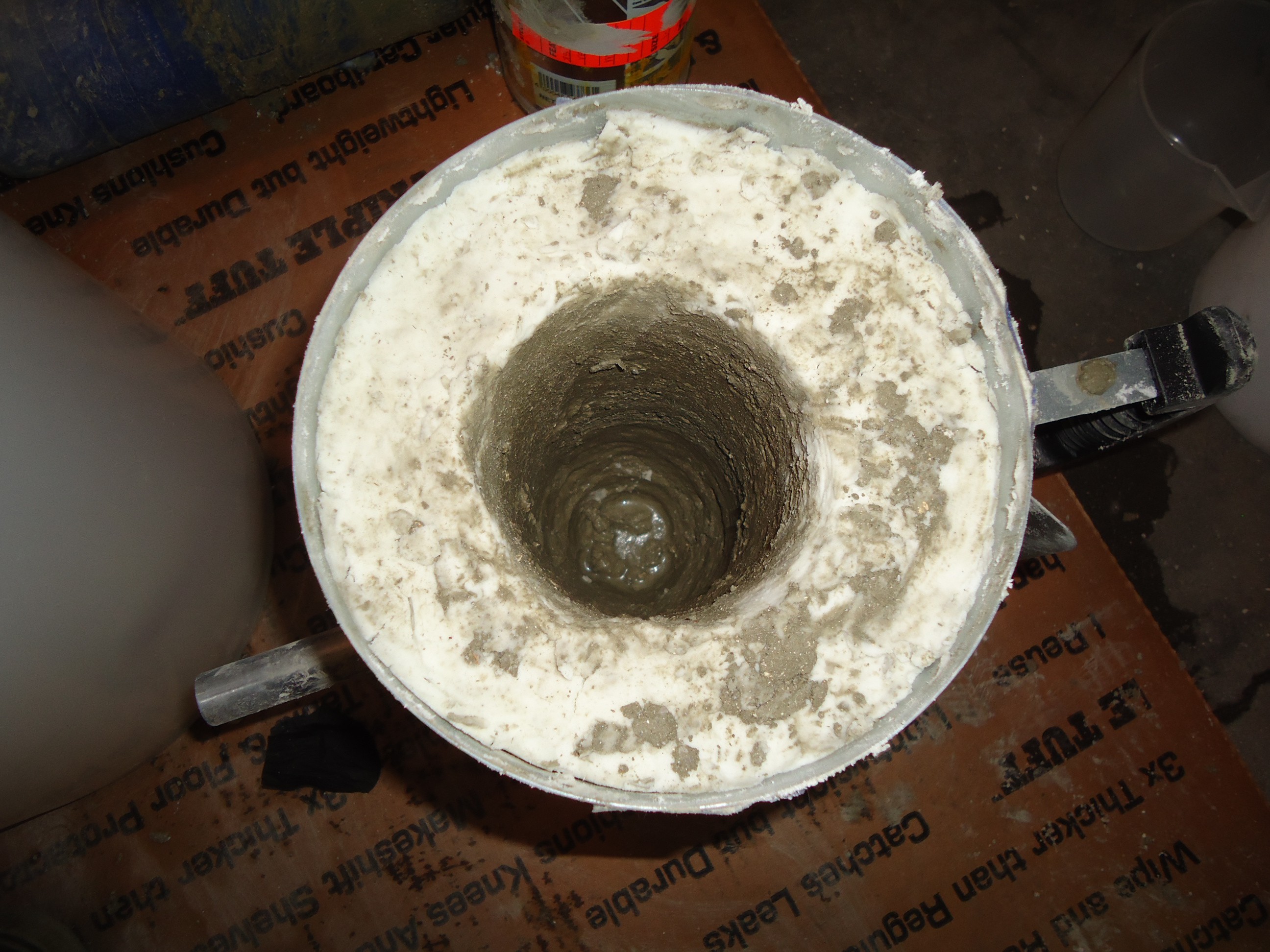
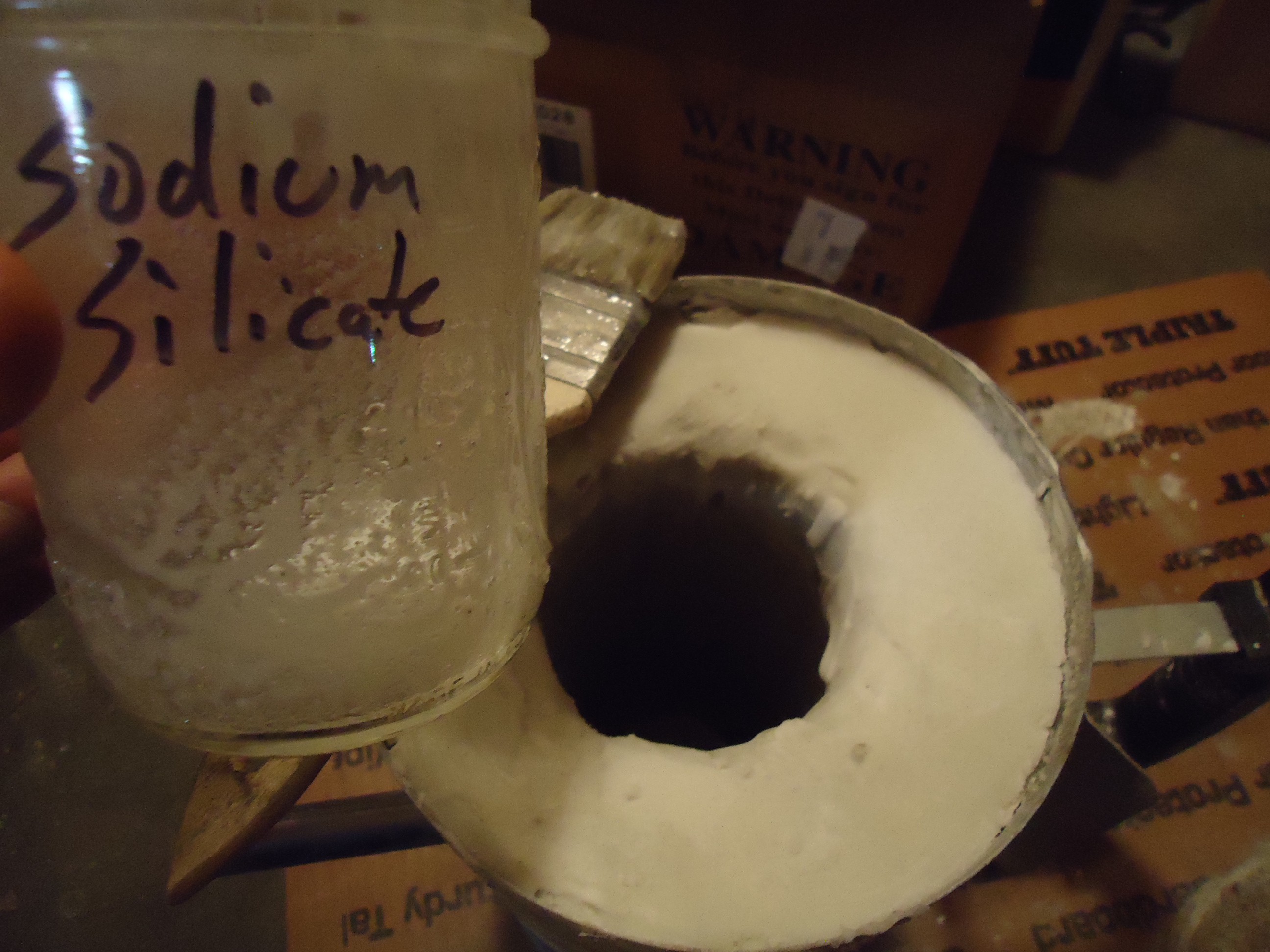


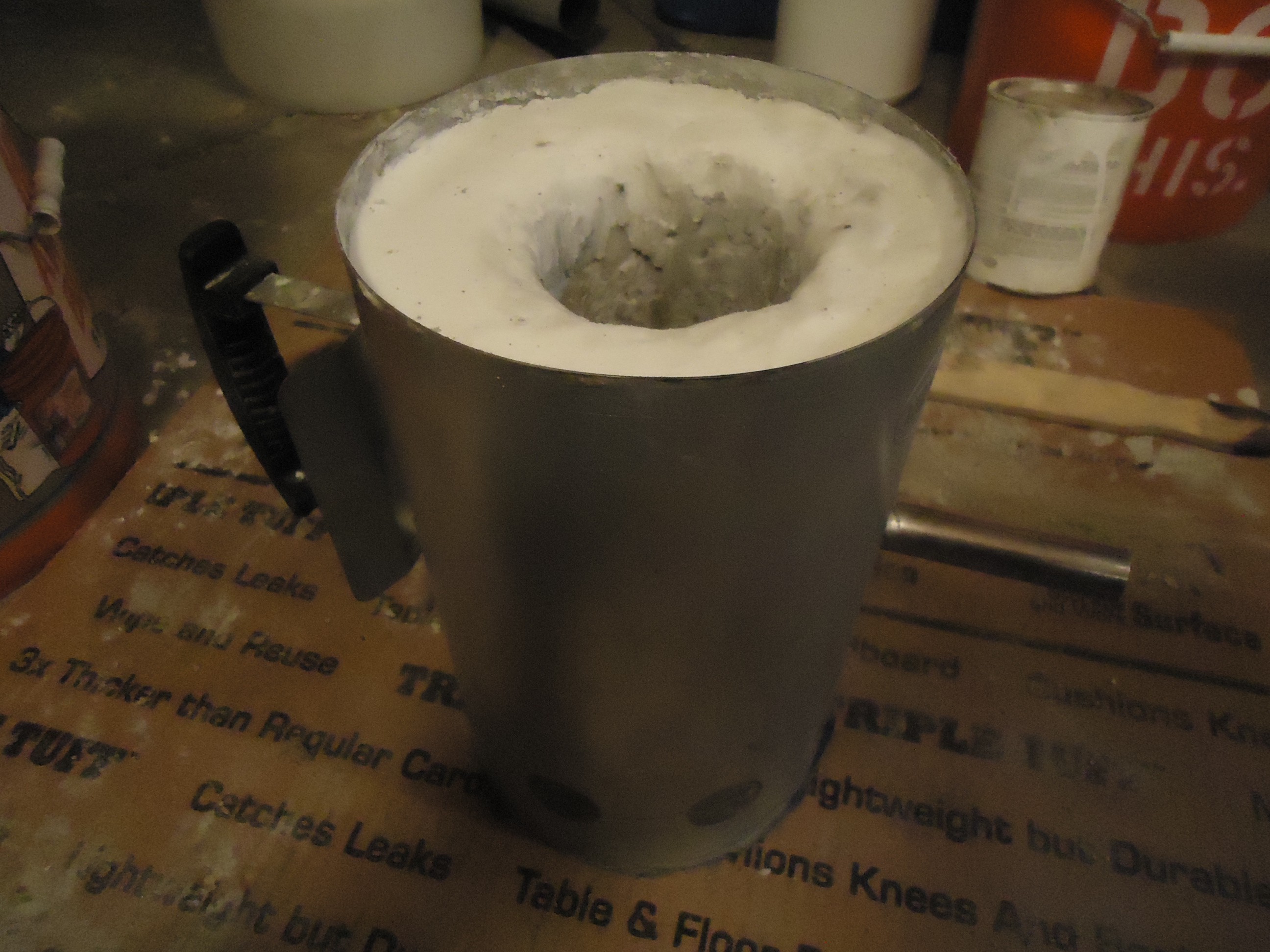
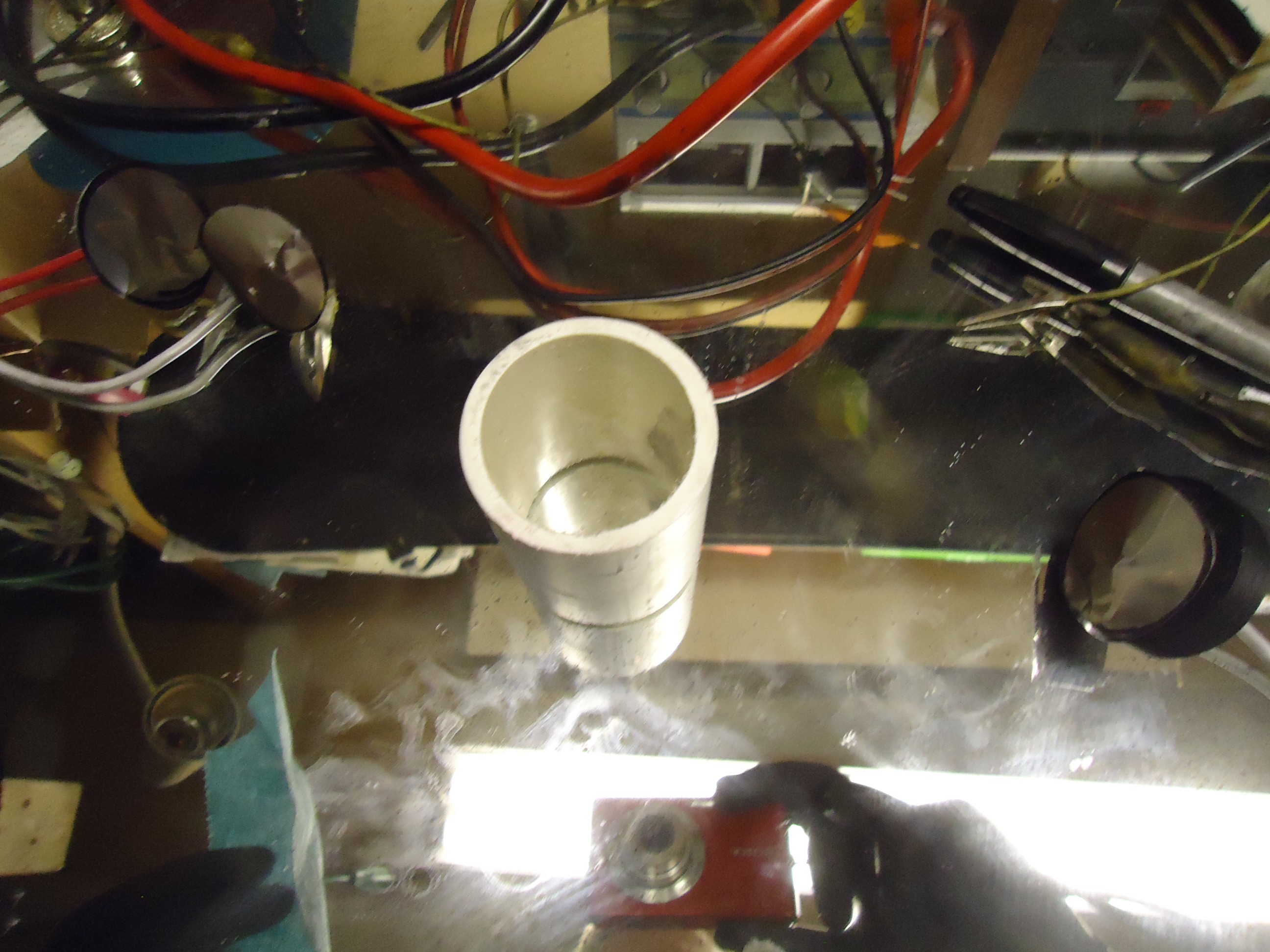
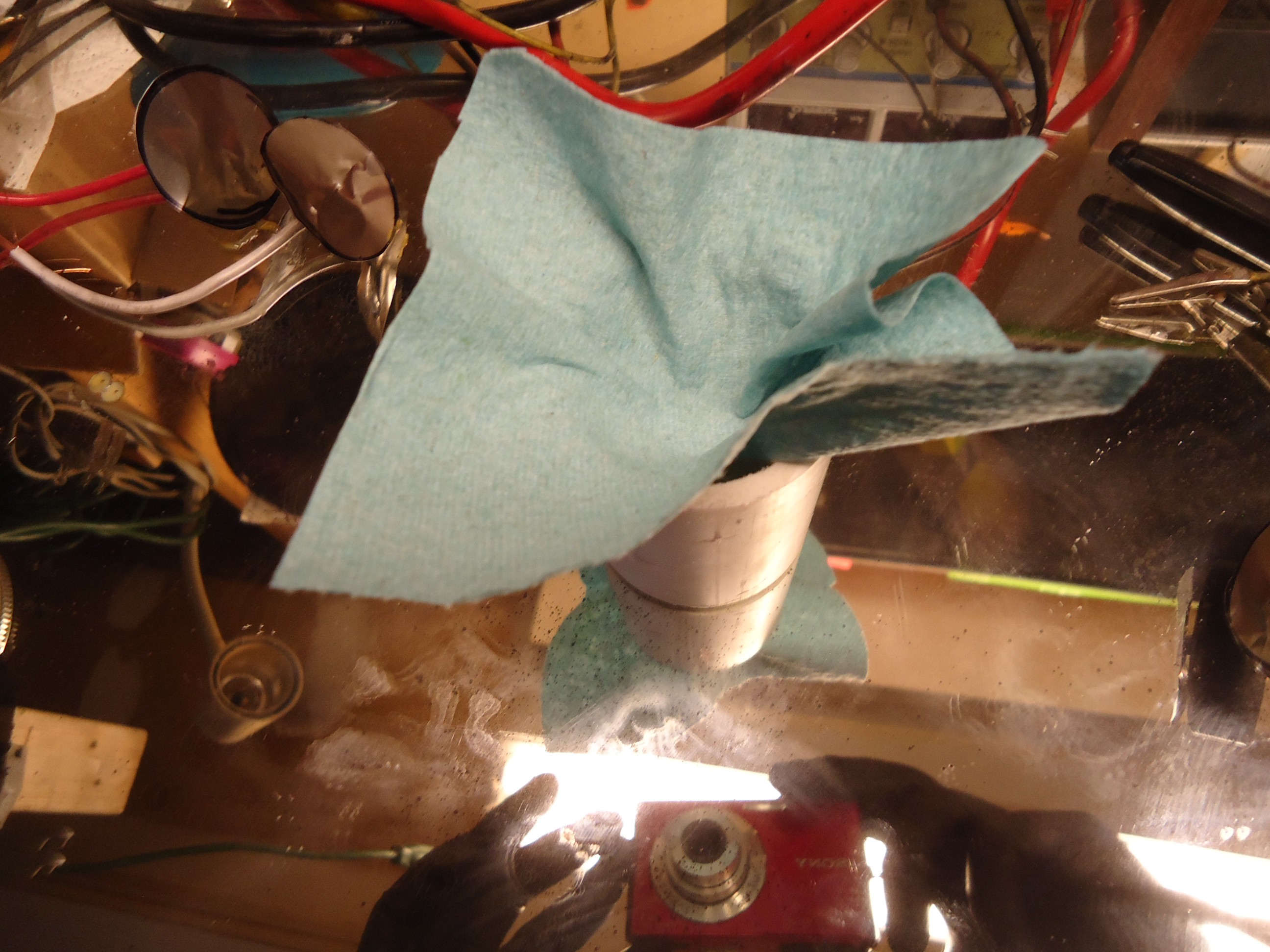 Place a piece of shop towel, on the PVC. Wet your monolith half in electrolyte then push it into the PVC trim off any excess shop towel. I used 1 M Li2SO4 and .008 M KI in water for the electrolyte this electrolyte allows a much larger stable operating voltage due to the high solvation affinity of water for sulfate ions and lithium ions. Meaning a stronger dielectric and no breakdown of water into hydrogen and oxygen up to about 1.6-1.8 volts. You can use anything from table salt to potassium hydroxide and still get marginal results.
Place a piece of shop towel, on the PVC. Wet your monolith half in electrolyte then push it into the PVC trim off any excess shop towel. I used 1 M Li2SO4 and .008 M KI in water for the electrolyte this electrolyte allows a much larger stable operating voltage due to the high solvation affinity of water for sulfate ions and lithium ions. Meaning a stronger dielectric and no breakdown of water into hydrogen and oxygen up to about 1.6-1.8 volts. You can use anything from table salt to potassium hydroxide and still get marginal results. 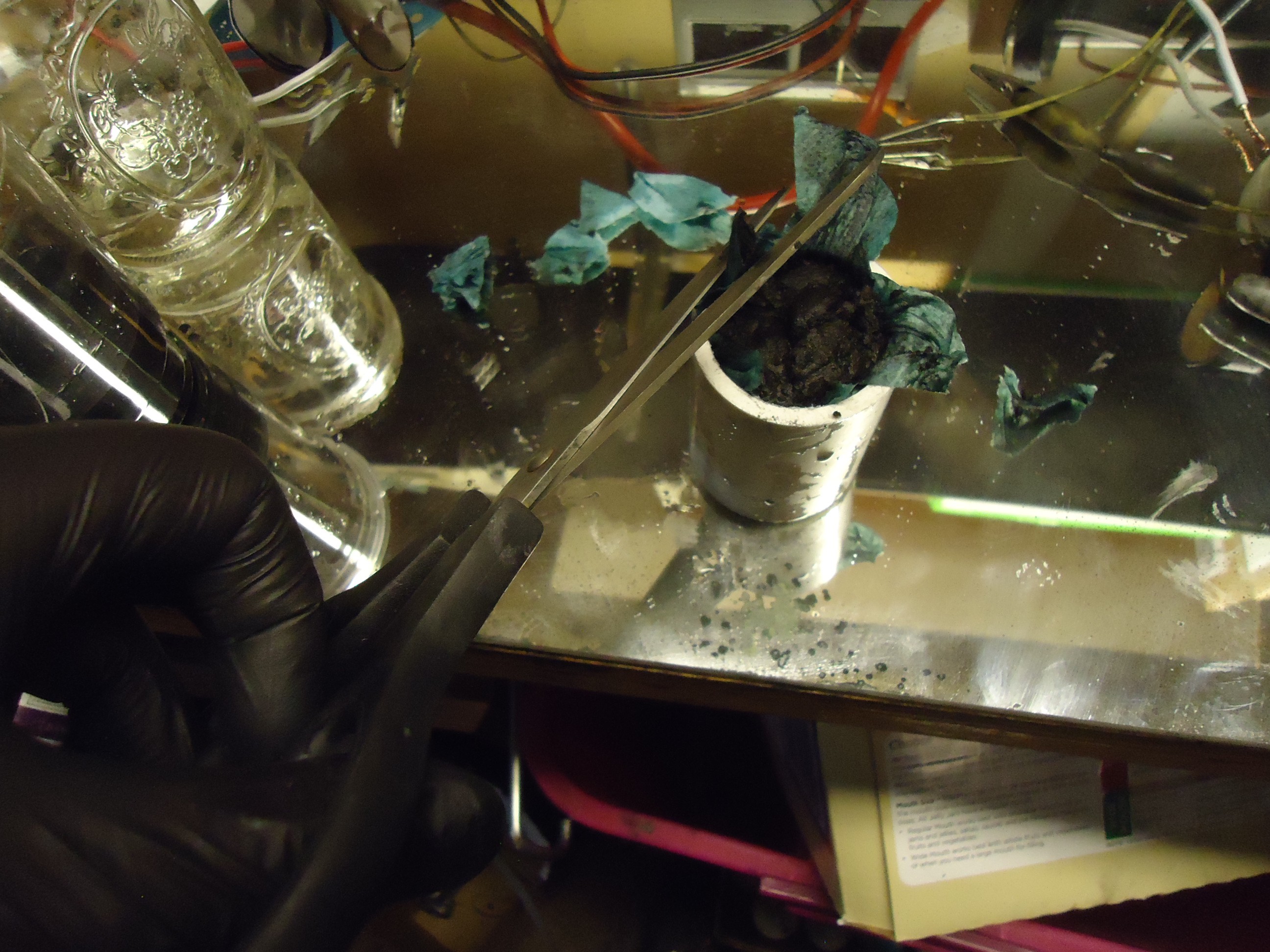
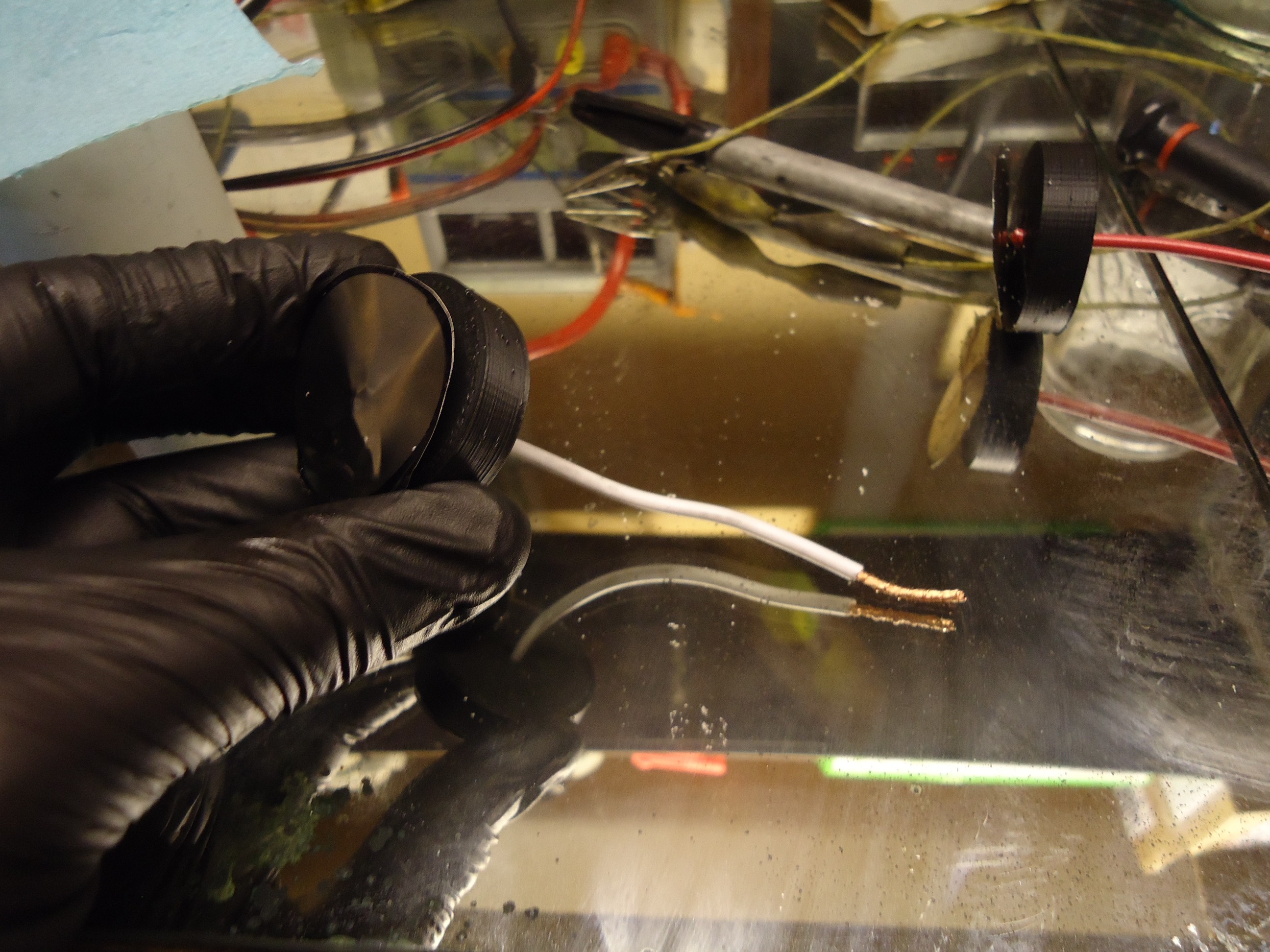
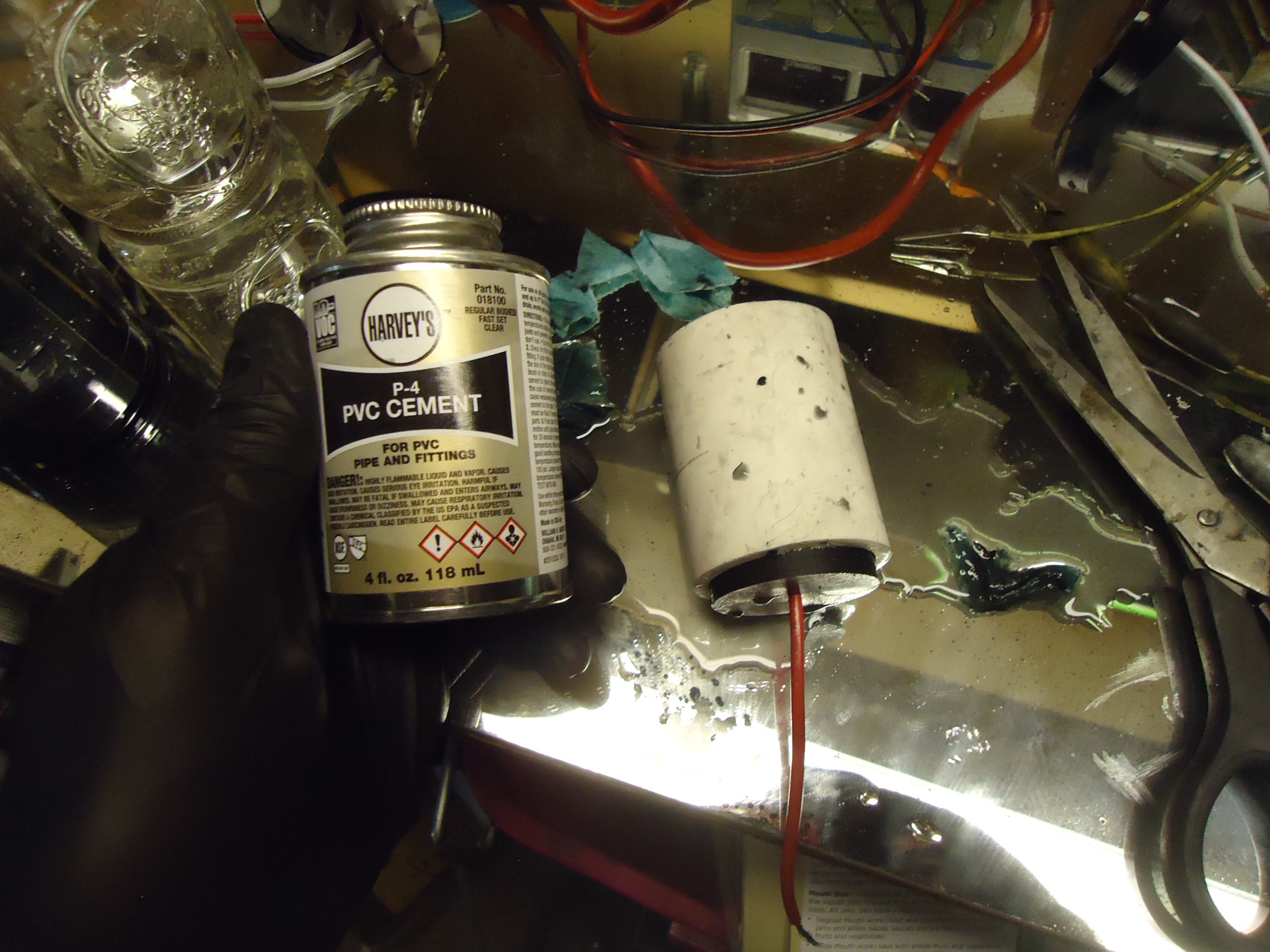
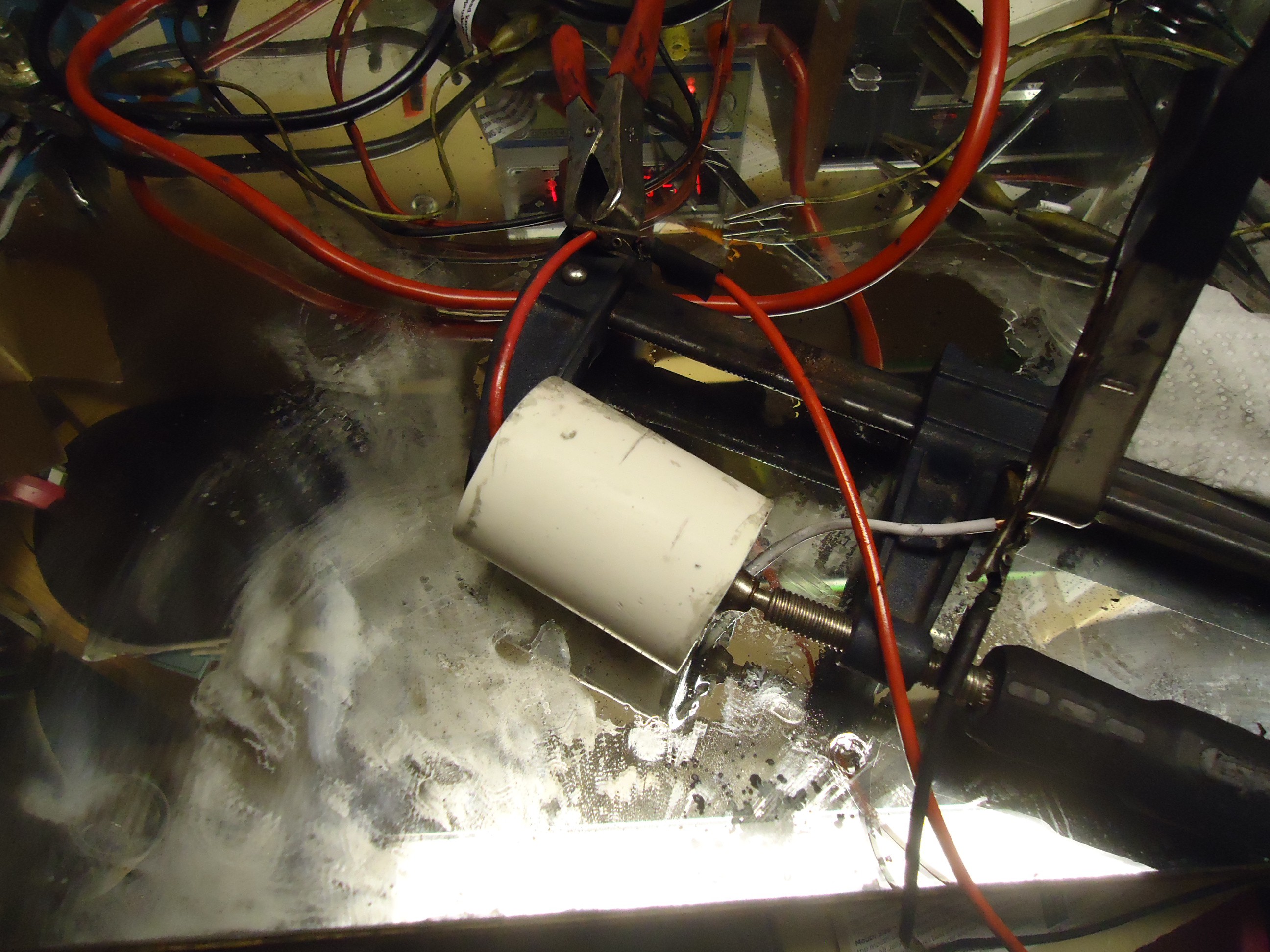

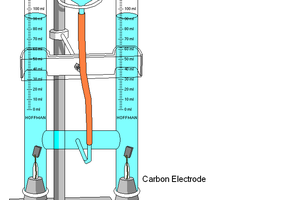
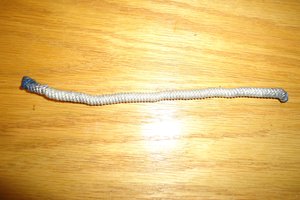

 Josh Starnes
Josh Starnes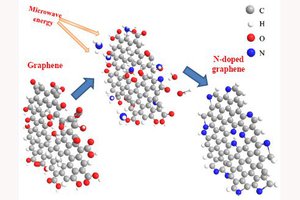
Dig your projects, man. What sort of ballmill are you using?